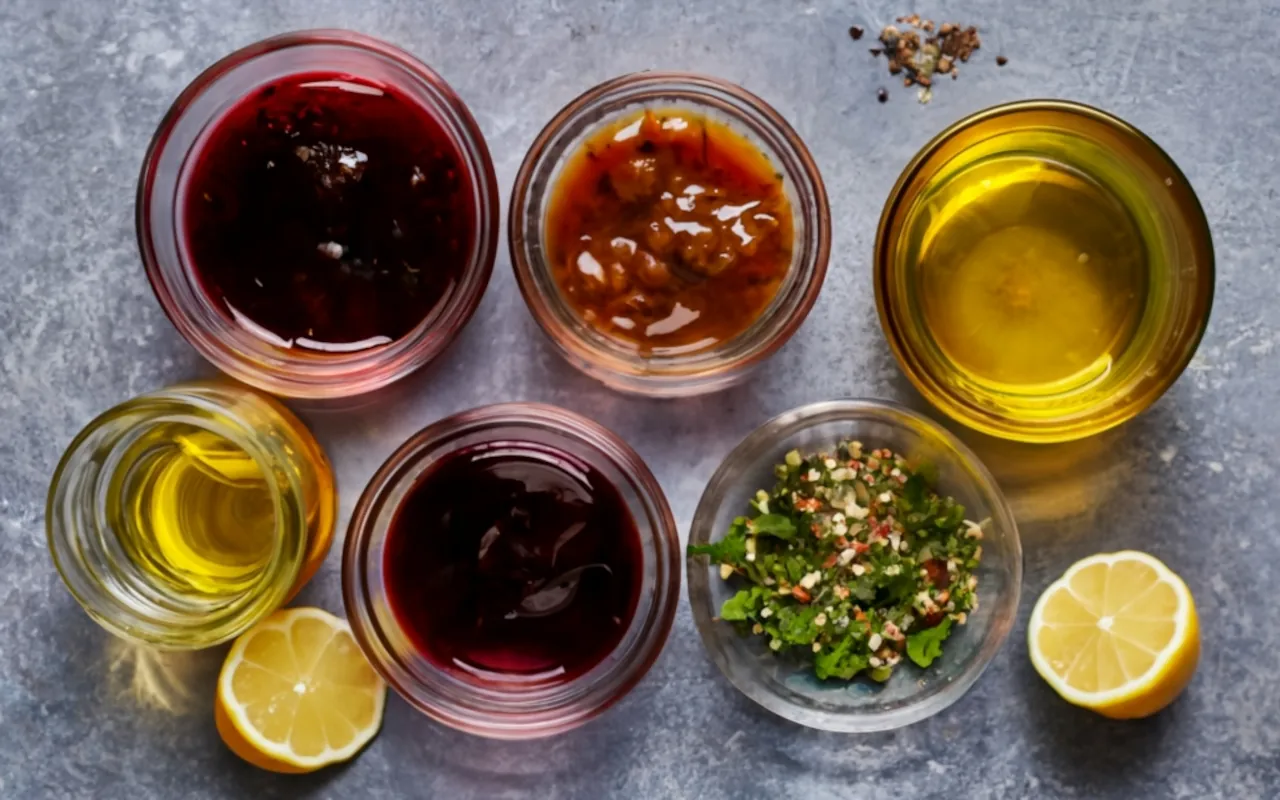Introduction: Unveiling the Magic Trio in Marinating
What are the 3 main ingredients when marinating? This question is at the heart of culinary alchemy, a process that transforms the ordinary into the extraordinary. Marinating, a technique central to diverse cuisines, revolves around three pivotal ingredients: acid, oil, and flavoring agents. These components work together in harmony to tenderize, moisturize, and infuse foods with an array of flavors, creating dishes that tantalize the taste buds and enrich the overall dining experience.
This age-old method, steeped in tradition, transcends mere cooking. It’s a testament to the ingenuity of cooks throughout history, who have harnessed the power of these three key ingredients in marination to preserve, enhance, and reinvent their culinary creations. From the zesty lemon marinades of the Mediterranean to the rich, soy-infused concoctions of East Asia, marinating is a global phenomenon, with each culture adding its unique signature to this timeless practice.
In this comprehensive guide, we delve deep into the art and science of marinating, exploring how acid, oil, and flavoring agents interact to unlock a world of flavors. We’ll journey through the historical pathways of marinating, tracing its evolution from a necessity to a fine art. The guide will also shed light on the myriad benefits of marinating, from tenderizing tougher cuts of meat to introducing healthful ingredients into our diets.
As we embark on this flavorful exploration, we invite you to discover the endless possibilities that marinating presents. Whether you’re a seasoned chef or a curious home cook, this journey through the world of marinating promises to enhance your culinary repertoire, offering new insights and inspirations to elevate your cooking to new heights.
The Essence of Marinating: A Historical and Cultural Journey
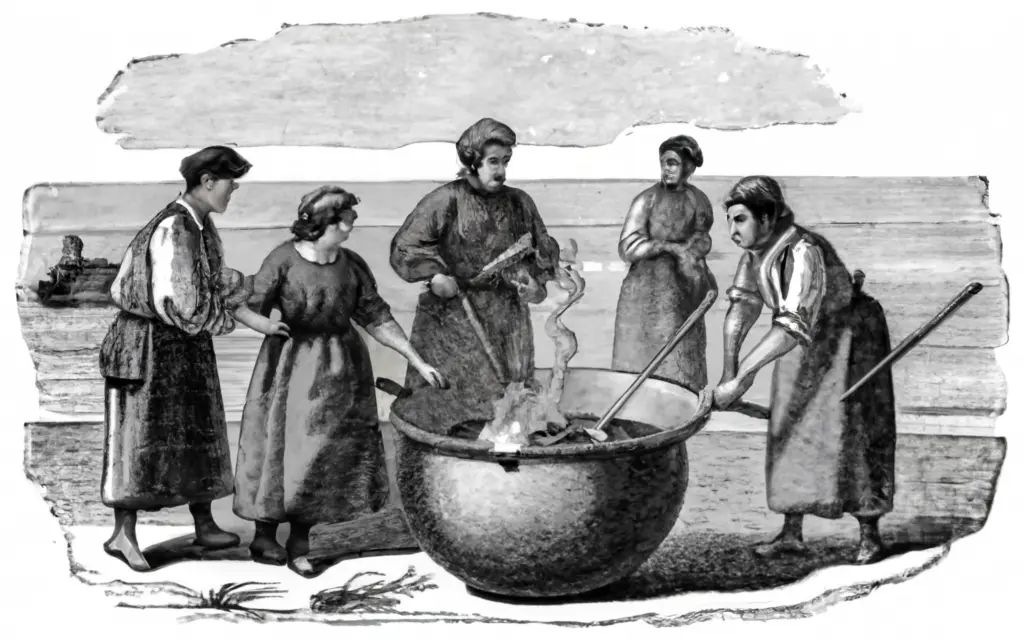
The Historical Perspective of Marinating
Understanding what the 3 main ingredients when marinating are, helps us appreciate marinating as a deep-rooted tradition. Its origins date back to ancient times. Before refrigeration, cultures used marinades for preservation. Ingredients like vinegar and wine were key due to their acidic nature. As global interactions grew, so did marinating methods. This section explores how cultural exchanges shaped marinating into a sophisticated culinary art.
To learn more about the fascinating history of marinades, check out this detailed article.
Benefits of Marinating
Marinating, particularly when considering what the 3 main ingredients are, offers several advantages.It tenderizes meat, making it succulent and digestible. Acids in marinades break down proteins, while oils add moisture. This process keeps meat juicy during cooking. Additionally, marinating introduces healthful ingredients into our diets. Many herbs and spices in marinades are rich in antioxidants. They also have anti-inflammatory properties. This part will focus on the nutritional benefits of marinating. We’ll discuss how it contributes to healthier cooking. The impact of marinating on food’s texture and taste will also be covered. This makes it a versatile technique for various cuisines and diets.
Core Ingredients of a Marinade: The Foundation of Flavor
Acid: The Flavor Enhancer
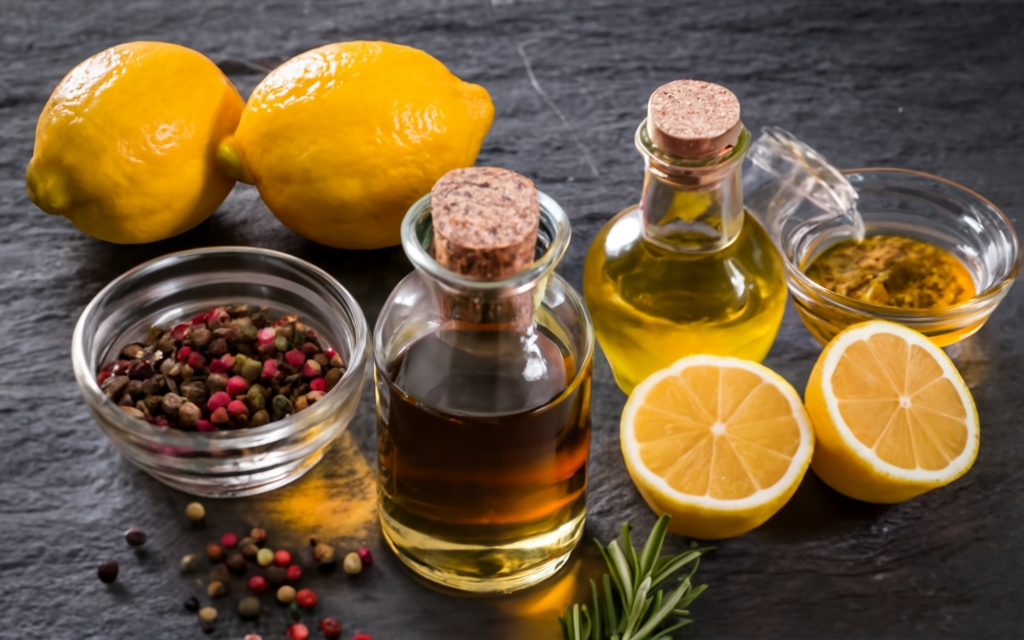
Acid, one of the 3 main ingredients when marinating, plays a crucial role. They tenderize meat by breaking down proteins. This makes the meat more receptive to flavors. Common acids in marinades include vinegar, citrus juices, and wines. Each type brings a unique flavor profile and tenderizing ability. Vinegar, for instance, adds a sharp tang, while citrus juices offer a fresher, lighter zest. This section will explore various acids used in marinades. We’ll discuss their roles and how they affect the dish’s taste and texture.
Oil: Ensuring Moisture and Texture
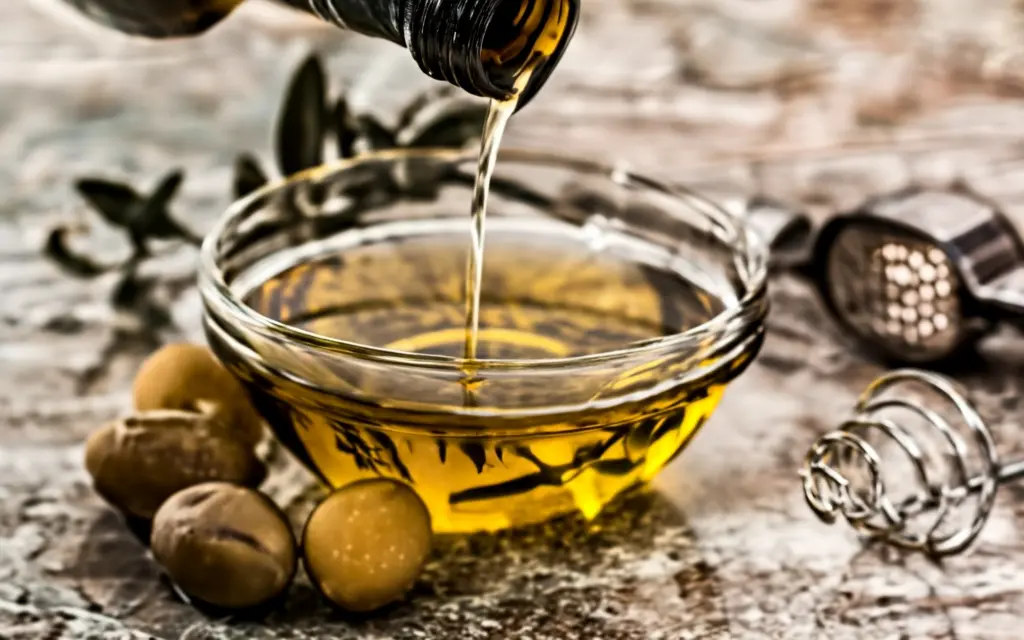
Oil, another of the 3 main ingredients when marinating, serves to retain moisture and enhance texture. It helps in evenly distributing flavors and prevents the meat from drying out during cooking. Popular choices are olive oil and sesame oil. Each oil contributes its distinct taste and health benefits. Olive oil, for example, is known for its heart-healthy properties. Sesame oil adds a nutty flavor, often used in Asian cuisines. This segment will delve into different oils used in marinating. We’ll discuss how they interact with other ingredients and tips for selecting the right oil for various dishes.
Flavoring Agents: Herbs and Spices
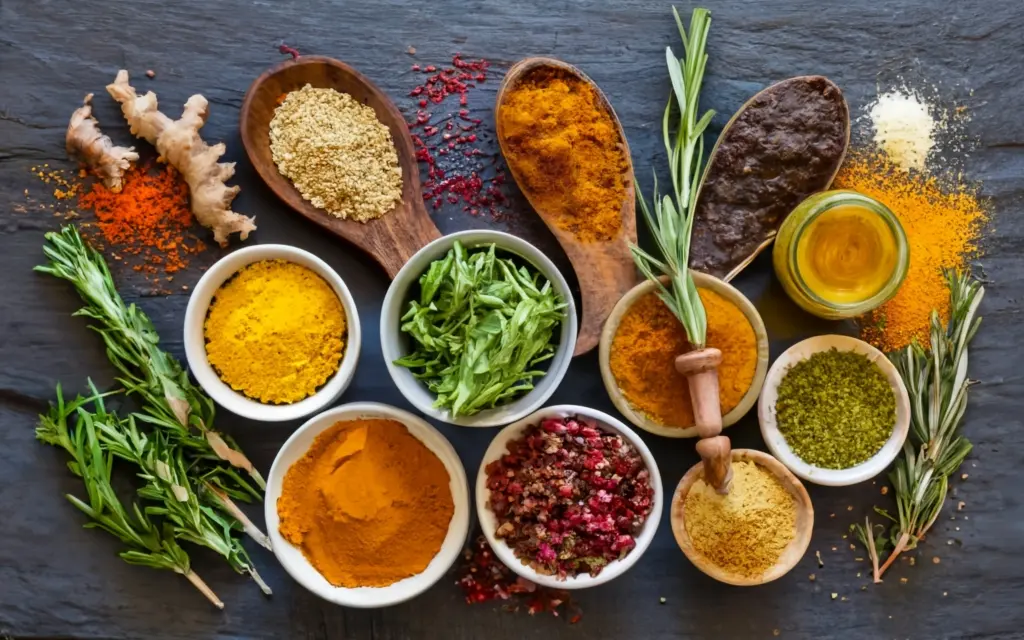
Herbs and spices are the essence of a marinade, providing distinct flavors and aromas. They range from common herbs like rosemary and thyme to more unique spices like turmeric or saffron. This part will explore a variety of herbs and spices used in marinades. We’ll provide insights into creating balanced and flavorful combinations. The focus will be on how these flavoring agents can transform a simple marinade into a complex and aromatic mixture.
For a scientific perspective on using natural ingredients in marinades, read this insightful NCBI study.
Marinating Techniques: Mastering the Art with Various Ingredients
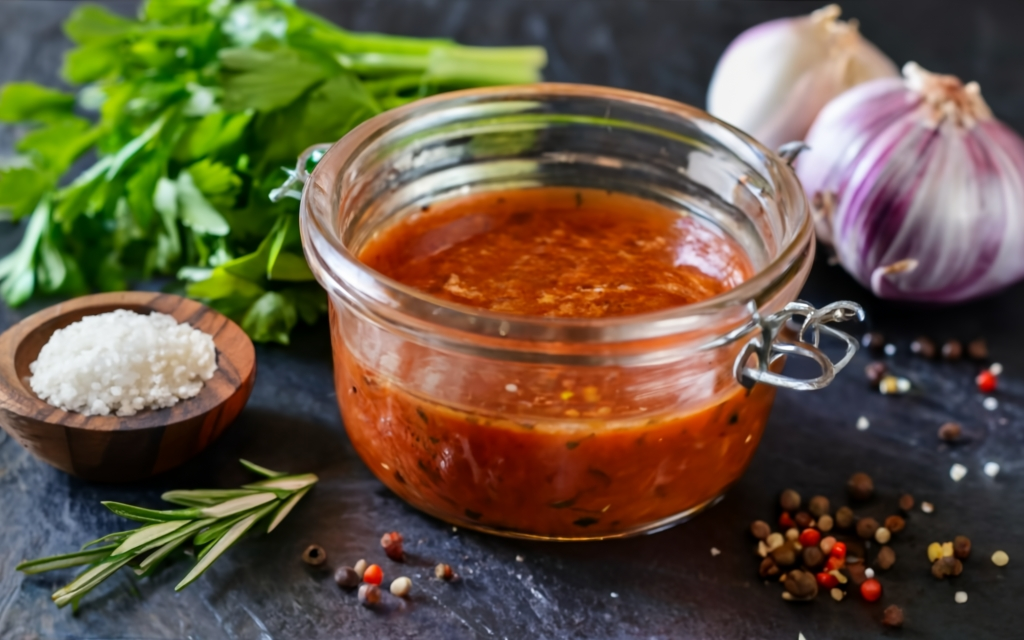
Marinating Meats: Maximizing Impact with Key Ingredients
Each type of meat interacts differently with the 3 main ingredients when marinating. Chicken, beef, and fish each require different techniques. For instance, chicken benefits from longer marinating times due to its denser texture. In contrast, fish requires a shorter marinating period to avoid becoming mushy. This section will offer detailed guidance on marinating various meats. It will cover factors like ideal marinating times and suitable marinade ingredients for each meat type. Tips for maximizing flavor absorption and ensuring even marinating across different cuts will also be shared.
Vegetarian Marination: Adapting the Core Trio
Marinating is not limited to meats; it’s equally effective for vegetarian dishes. Tofu, vegetables, and plant-based meats can be enhanced significantly through marinating. This part will explore the unique considerations for marinating plant-based foods. It will discuss adapting marinating techniques to boost the flavors of vegetarian dishes. The focus will be on the best types of marinades for different vegetables and plant proteins. Insights into how marinating can transform the texture and taste of vegetarian ingredients will also be provided.
Time and Temperature: Perfecting Marination with the Essential Trio
The success of marinating often hinges on time and temperature. This segment will delve into the science behind marinating times and the importance of temperature control. Different marinating durations affect various types of food in distinct ways. The section will explain why it’s essential to marinate at the right temperature to ensure food safety. Practical tips for effective marinating, including using refrigeration and room temperature strategically, will be offered.
Advanced Marinating Tips: Elevating Your Culinary Skills
Balancing the Trio: Crafting the Perfect Marinade
The art of marinating lies in balancing flavors. A well-crafted marinade strikes a harmony between sweet, sour, salty, and umami elements. This section will guide you on how to adjust and experiment with different ingredients to achieve this balance. It will also emphasize the importance of considering the main ingredient’s flavor profile. The goal is to ensure that the marinade complements and enhances the dish, rather than overpowering it.
Choosing Marinades: Homemade vs. Store-Bought
The choice between homemade and store-bought marinades can significantly impact the flavor of your dish. This segment will compare the two, highlighting the advantages of homemade marinades, such as control over ingredients and the absence of preservatives. It will also acknowledge the convenience of store-bought options. Tips on what to look for when choosing a commercial marinade will be provided. Additionally, this section will offer simple recipes for quick and easy homemade marinades that can serve as healthier alternatives to store-bought versions.
Healthier Cooking with Marinating: Utilizing the Core Ingredients
Marinating is not just about enhancing flavor; it can also contribute to healthier cooking. This part will explore how marinating can reduce the formation of harmful compounds during cooking, especially in grilled and barbecued foods. It will discuss the use of healthful ingredients in marinades, such as herbs, spices, and oils rich in beneficial compounds. Suggestions for creating low-sodium and low-sugar marinades without sacrificing flavor will also be included.
Global Marinade Variations: Exploring World Flavors
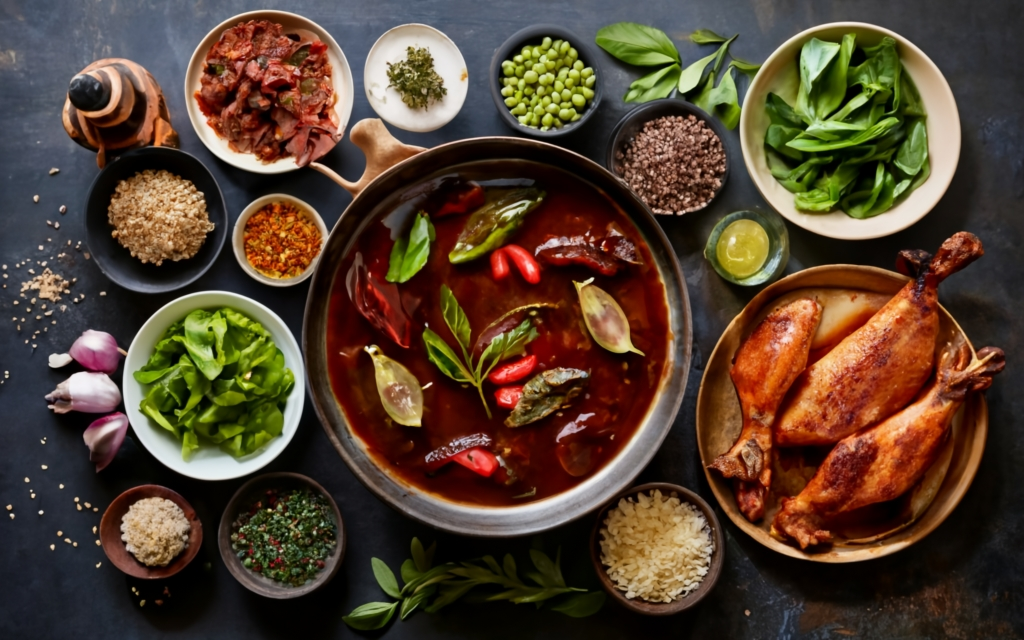
Asian Marinades: A Blend of the Essential Marinating Ingredients
Asian cuisines are renowned for their diverse and flavorful marinades. These often feature a blend of sweet, sour, and umami flavors, using ingredients like soy sauce, ginger, and sesame oil. This section will explore the variety of ingredients commonly used in Asian marinades. It will highlight the regional variations within Asia, showing how different countries incorporate unique local ingredients into their marinades. Examples from various Asian cuisines will illustrate how these marinades enhance the dishes’ flavors.
Mediterranean Marinades: Freshness from Acid, Oil, and Spices
Mediterranean marinades are known for their use of fresh herbs, olive oil, and citrus. This part will delve into the characteristic ingredients of Mediterranean marinades and how they complement a variety of dishes. The discussion will also cover the health benefits associated with the Mediterranean diet. The focus will be on how these marinades contribute to this wholesome eating style, offering both flavor and health benefits.
Latin American Marinades: Bold Flavors with the Core Trio
Latin American marinades stand out for their bold and spicy flavors. Key ingredients like chili peppers, lime, and cilantro define these marinades. This segment will examine these ingredients and their role in Latin American cuisines. It will explore the cultural significance of these flavors and provide tips for incorporating them into everyday cooking. The section will also offer insights into how these vibrant marinades can transform simple ingredients into flavorful dishes.
FAQs on Marinating: Answering Common Questions
Understanding the 3 Main Ingredients in Marinating
In this expanded section, we delve deeper into the frequently asked questions about marinating, providing more detailed answers and insights.
Determining Ideal Marinating Times
“How long should I marinate different types of food?” This common question varies based on the food type. For instance, delicate proteins like fish require shorter marinating times, often just 30 minutes to an hour, to avoid texture changes. Chicken and pork benefit from longer periods, ranging from a few hours to overnight, for deeper flavor infusion. Beef, especially tougher cuts, can be marinated for up to 24 hours. This part will offer a comprehensive guide on marinating times for various foods, ensuring optimal flavor and texture.
Safety Aspects of Reusing Marinades
“Is it safe to reuse a marinade?” This is a crucial question for food safety. Once a marinade has been used on raw meat, poultry, or fish, it contains raw juices that may harbor harmful bacteria. Reusing such a marinade without proper treatment can pose a health risk. This section will explain safe practices for reusing marinades, such as boiling the marinade before using it as a sauce, to eliminate any harmful bacteria.
Marinating with Acidic Ingredients
“How do acidic ingredients affect the marinating process?” Acids like vinegar, lemon juice, or wine are key to many marinades. They help in tenderizing the meat by breaking down proteins. However, overly acidic marinades or extended marinating times can lead to the opposite effect, causing the meat to become tough or rubbery. This part will discuss how to balance acidic ingredients in a marinade and the ideal marinating duration when using strong acids.
Marinating Plant-Based Proteins
“How do I marinate plant-based proteins effectively?” Marinating is not just for animal proteins. Plant-based proteins like tofu, tempeh, and seitan also benefit greatly from marinating. However, their absorption rates and texture responses differ. This section will provide tips on marinating plant-based proteins, including which marinade ingredients work best and how long to marinate for optimal flavor.
Impact of Marinating on Cooking Methods
“Does marinating affect how I should cook the food?” Marinating can influence the cooking process. For example, sugary marinades can cause quicker browning or burning when grilling or broiling. This part will offer advice on adjusting cooking methods and temperatures based on the type of marinade used, ensuring delicious and safe results.
Conclusion: Embracing the World of Marinating
Reflecting on the Journey: The Impact of the 3 Main Ingredients
In this final section, we’ll concisely recap the essential points covered in the article. Firstly, we discussed the basic components of a marinade, including acids, oils, and flavoring agents. Secondly, we delved into the global variations, exploring how different cultures have their unique takes on marinating. Additionally, we provided advanced tips for perfecting the art of marinating.
Furthermore, the conclusion emphasizes the significant role of marinating in culinary traditions worldwide. Moreover, it encourages readers to experiment with their marinades, thereby reiterating the health benefits and creative possibilities that this technique offers. Consequently, this summary aims to inspire readers to incorporate these techniques into their cooking repertoire, ultimately enhancing their culinary experiences.
Inspiring Creativity in Marinating with Acid, Oil, and Spices
To conclude, we’ll inspire readers to explore and experiment with marinating. This part will offer encouragement to try new flavors and ingredients, pushing the boundaries of traditional marinating methods. The aim is to motivate readers to view marinating not just as a cooking technique but as a creative culinary adventure. We’ll open doors to a world of diverse and delicious flavors, inviting readers to embark on their own marinating journeys.
